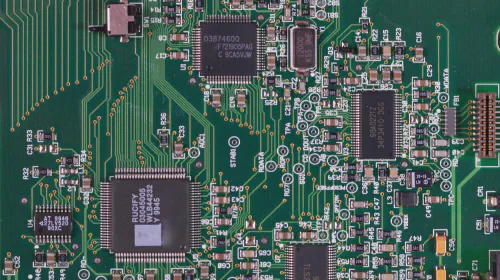Terra vs. Solana - What You Need to Know
Salomon Kisters
Jun 6, 2023This post may contain affiliate links. If you use these links to buy something we may earn a commission. Thanks!
The blockchain and cryptocurrency industry is rapidly expanding. An industry that began over a decade ago is home to the most significant technological innovations today.
However, the presence of around 22,904 cryptocurrencies often confuses people. This confusion is especially prevalent when two or more projects, such as Terra and Solana, look alike and try to solve the same problems.
In today’s blog, we will discuss the heat caught between Terra and Solana and everything you need to know about these blockchains.
What is Terra Classic?
A wide range of stablecoins has emerged in the search for stability on blockchains. Algorithmic stablecoins, as opposed to traditional fiat-backed stablecoins, promise several advantages, including the on-chain protocol that pegs their value to a demand/supply ratio maintained by an algorithm.
However, algorithmic stablecoins have only recently gained popularity since the TerraUSD (UST) launch, a dollar-pegged stablecoin on the Terra platform. The original Terra platform consisted of several different crypto tokens, with TerraUSD and LUNC (originally known as LUNA) being the most important ones.
The native token Terra (LUNA) was originally the network’s staking asset. Users stake LUNA to gain access to governance, get promoted as validators, and receive benefits. LUNA could also be burned on the blockchain to receive newly minted Terra’s UST token.
The blockchain recently underwent a major blow when about $2 billion worth of UST was unstacked from the Anchor Protocol, and hundreds of millions were subsequently sold. Although the precise motivation for this crime is still unknown, some speculate that it may have been part of a planned attack on the larger Terra ecology.
In the aftermath of this episode, the price of UST fell from $1 to a few cents due to this significant sell-off. UST was algorithmically linked to LUNA for stabilization. As a result of the UST’s inability to be fully redeemed, LUNA (now LUNC) and the rest of the Terra network crashed.
What is Terra Luna?
Right after the decline and crash of Terra Classic, Do Kwon – one of Terra’s founders – presented the regeneration strategy on May 28, 2022. The new Terra 2.0 became Terra Luna, and the old one was rebranded to Luna Classic.
The goal behind this move was to offer an upgrade of the Terra blockchain and an airdrop to cryptocurrency investors, who suffered heavily from the recent market decline. For now, the main objective of the new Terra ecosystem project is to rebuild trust in its technology.
According to Terra 2.0’s policy, cryptocurrency investors who bought more than 10,000 LUNA before this network suffered catastrophic damage will receive new LUNA tokens periodically. In theory, it will help in preventing the immediate sale of Terra 2.0.
What is Solana?
Solana was founded in 2017 by Anatoly Yakavenko, a Russian computer scientist. It all started when Yakavenko wrote Solana’s Whitepaper. Solana was primarily created to solve the problem of blockchain scalability that plagued many traditional networks. Before Solana, most blockchains had trouble processing multiple transactions promptly.
Bitcoin, for instance, processes 7 transactions per second. Ethereum, the second-generation blockchain, can only validate 30 transactions during the same amount of time.
Yakavenko introduced the idea of an “internal clock” in blockchain technology that could solve the scalability issue. This clocking mechanism will significantly decrease transaction processing time without compromising on network decentralization.
A Brief Background
Terra
In January 2018, an IVY League-educated economist, Daniel Shin, and IVY League Computer-Scientist Do Kwon, together developed Terra. Do Kwon remained the CEO of Terra until its decline, but Daniel Shin left Terraform Labs in early 2020 and became the CEO of the Chai-Corporation, a payments app that leverages Terra.
Today, Terra’s development is coordinated by the Luna Foundation Guard (LFG), despite the fact that the foundation faced a huge loss of almost $3 billion worth of Bitcoin by investing in this project.
Terra raised around $47 million in 2018. Furthermore, it raised tens of millions of dollars from prominent crypto stakeholder, Galaxy Digital, which invested $25 Million. Terra’s blockchain was built using COSMOS SDK, making it much more efficient and faster in performing transactions without compromising security.
However, the project was criticized for being significantly centralized with its 130 validators.
Solana
As already mentioned, the primary force behind the Solana project is Anatoly Yakovenko. Before Solana, Yakovenko gained early recognition at Qualcomm and Dropbox, where he worked as a senior staff engineer manager and software developer. Later, he began working on a project in 2017 that would eventually become Solana.
Yakovenko and his fellow employee at Qualcomm, Greg Fitzgerald, launched the Solana Labs initiative. The Solana protocol and SOL coin were made available to the general public in 2020. Soon after its launch came a phenomenal bull run during which the price of Solana hiked from $1.2 to $56.2 in May 2021.
After the release of the Degenerate Ape NFT collection, the price of SOL climbed further, largely due to increased developer activity on the Solana ecosystem, thus, growing institutional interest, expanding DeFi ecosystem, and furthering the development of the NFTs and gaming protocols on Solana.
As expected, Solana’s price jumped to its ATH of $257 on November 6, 2021.
Consensus Mechanism
Solana
The consensus mechanism is a key component that distinguishes blockchains. Solana uses the Proof-of-History algorithm, which enables quicker processing and less expensive transactions. The PoH offers a theoretical approach for cryptographically demonstrating the passage of time and how events fit within that timeline.
In the PoH mechanism, nodes can validate transactions without exchanging significant amounts of data with one another. Instead, they look at the blockchain’s chronological history of past transactions and events. In theory, at least, this model allows Solana to process up to 710,000 transactions per second.
Moreover, the evidence of stake in Solana is also strengthened and made more effective through PoH. This consensus model helps Solana optimize block propagation, available ledger storage, and block time.
Terra
Terra blockchain is driven by a Proof-of-Stake consensus algorithm, powered by the Cosmos SDK, and protected by a Tendermint consensus verification system. In this system, LUNA token holders use their tokens as collateral to validate transactions. Their rewards are based on how many LUNA they stake.
In other words, Terra uses Delegated Proof-of-Stake, which is based on Tendermint, and depends on a group of validators in charge of adding new blocks to the blockchain. This consensus model makes Terra’s claimed transaction rate of 10,000 TPS significantly higher than Ethereum (30 TPS) and Bitcoin (6-7 TPS).
Tokenomics
Solana
The native token of Solana is SOL. SOL is used to interact with different dApps and pay transaction fees. Additionally, you can earn SOL by participating in the network as a validator or node. SOL’s tokenomics are centered on scalability and security. The current market cap of Solana is $8,303,196,538, while the total circulatory supply is around 395,621,770.
Terra Luna Classic
The original Tera chain is still functioning but has been renamed Terra Classic. The original LUNA is now Luna Classic (LUNC). Similarly, Terra stablecoins (UST, KRT, EUT, etc.) were renamed Terra Classic stablecoins (USTC, KRTC, EUTC, etc.) Terra Classic’s Market Cap is currently $522,287,131, with a total of 5,876,273,216,774 LUNC in circulation.
Terra Luna
The new Terra Luna token (LUNA) is also tradable on various exchanges and trading platforms. However, it has a smaller market capitalization of $254,673,356 compared to its predecessor LUNC. The total number of tokens currently in circulation is around 273,161,865, whereas the total supply is capped at 1,004,262,701 LUNA. It is also important to note that the token has lost over 95% of its launch price, i.e., $19.5.
Conclusion
Terra and Solana are both prominent blockchain platforms that have gained attention in the cryptocurrency and decentralized finance (DeFi) spaces. Both Terra and Solana blockchains command massive institutional interest.
There is no doubt that Solana’s various projects, like maps.me, Star Atlas, and Raydium, are among the highest total value locked (TVL) DeFi projects, making Solana a tough competitor in the crypto market.
On the other hand, the future of Terra 2.0 is not easy to predict because of the decline of Terra Classic. Before this extreme clash, LUNA was considered an advanced platform for many DeFi projects.
Considering the current market sentiment, Solana easily beats Terra in almost every department, including users’ trust, TVL, DeFi development, and commercial collaborations. However, despite the rough times, Terra still has a dedicated community that continues to support the project.
It will be interesting to see what the Terra project can do in the coming years.
Stay informed with the latest insights in Crypto, Blockchain, and Cyber-Security! Subscribe to our newsletter now to receive exclusive updates, expert analyses, and current developments directly to your inbox. Don't miss the opportunity to expand your knowledge and stay up-to-date.
Love what you're reading? Subscribe for top stories in Crypto, Blockchain, and Cyber-Security. Stay informed with exclusive updates.
Please note that the Content may have been generated with the Help of AI. The editorial content of OriginStamp AG does not constitute a recommendation for investment or purchase advice. In principle, an investment can also lead to a total loss. Therefore, please seek advice before making an investment decision.

What is Solana, and What are Its Use Cases?
Solana is a modern blockchain that differs significantly from the Bitcoin network. This post will discuss Solana and its use cases.

Is Solana Dead? [2023]
Learn more about the challenges Solana has been facing and the possible outcomes, and explore the prospects for the blockchain.

Does Solana Solve the Blockchain Trilemma?
Solana is a blockchain platform that seeks to solve the blockchain trilemma. Does Solana offer a workable solution?
Protect your documents
Your gateway to unforgeable data. Imprint the authenticity of your information with our blockchain timestamp